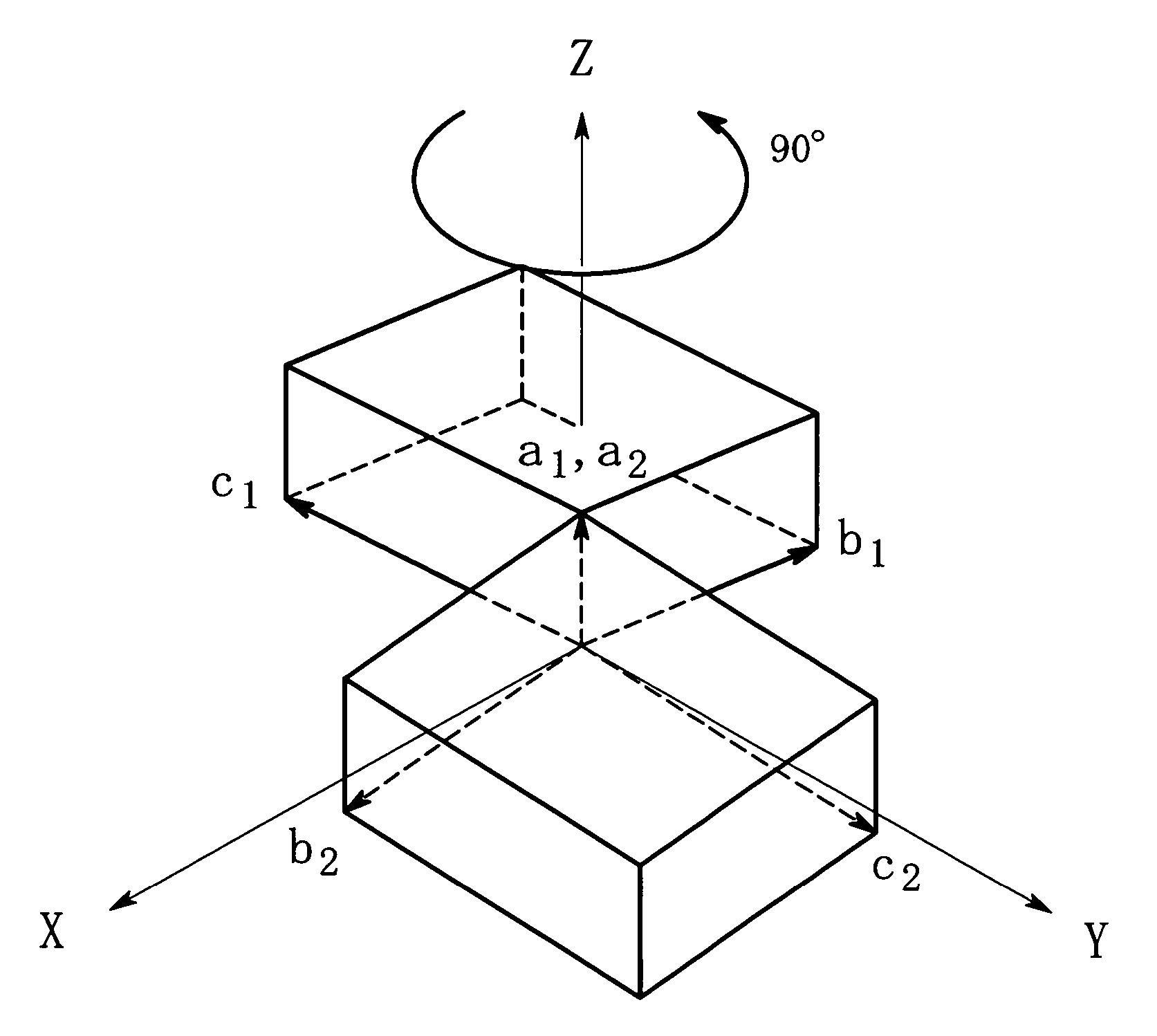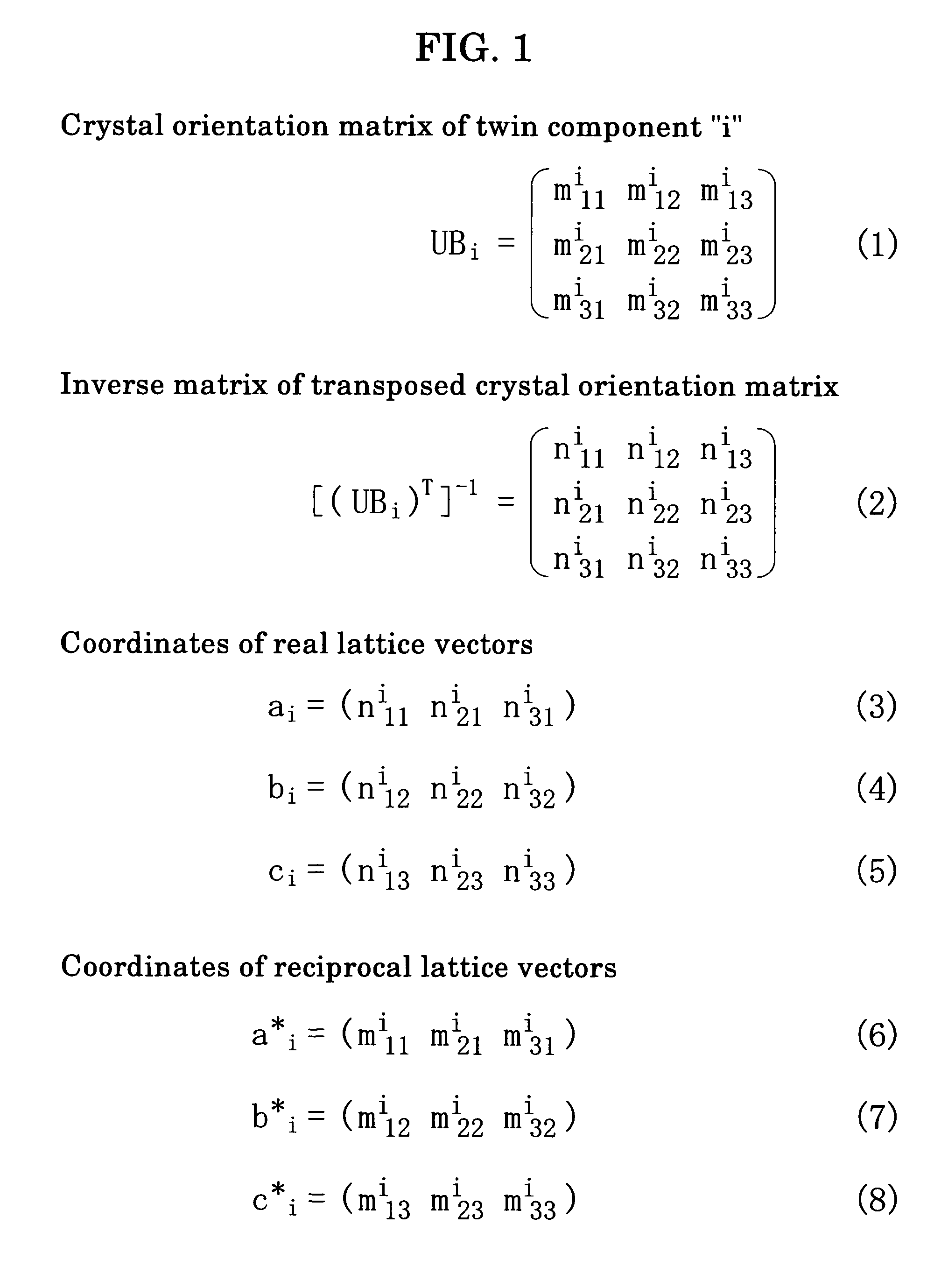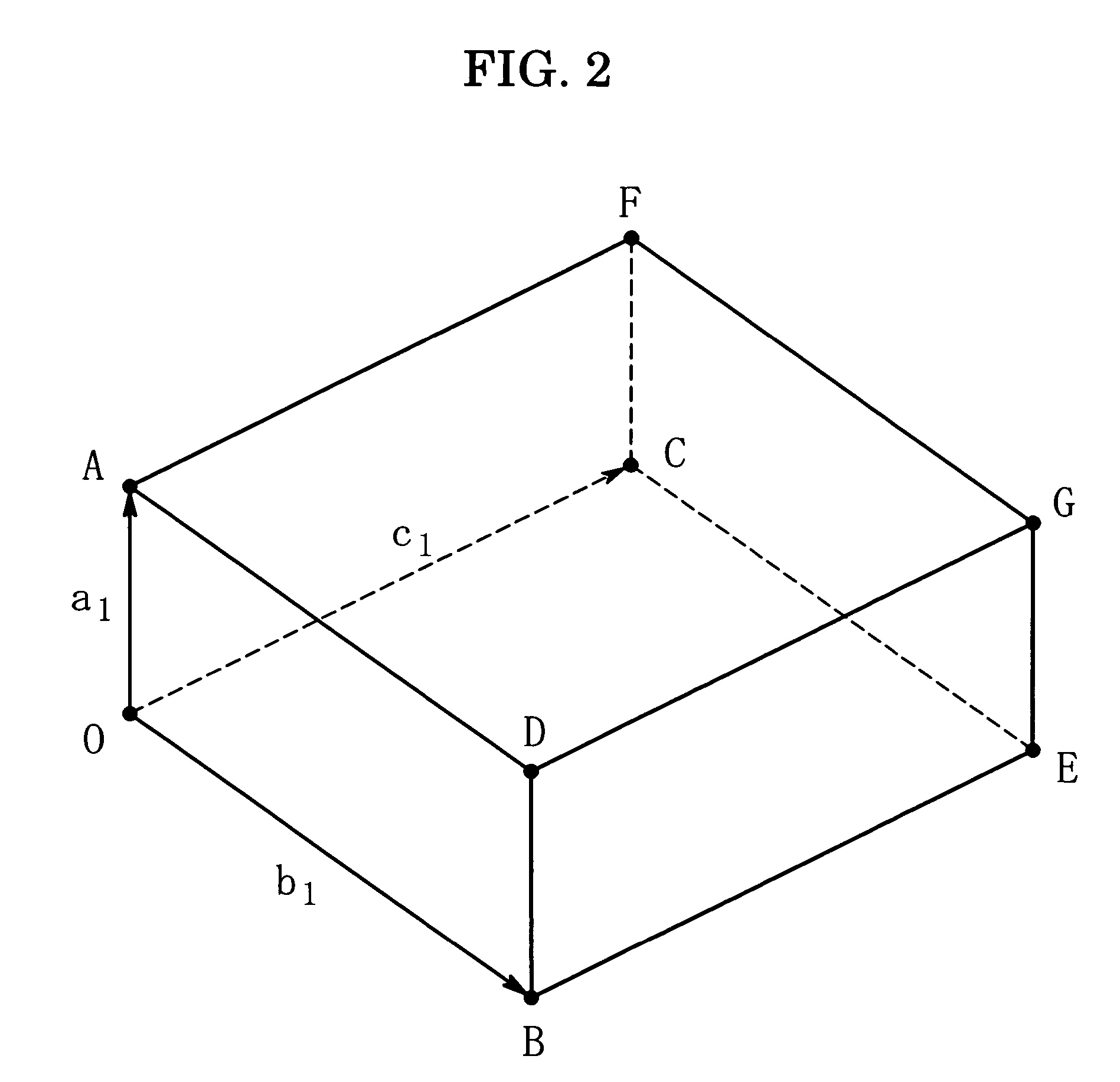Method and apparatus for analyzing twinned crystal
a twinned crystal and apparatus technology, applied in chemical methods analysis, material analysis using wave/particle radiation, instruments, etc., can solve problems such as difficult analytical operation
- Summary
- Abstract
- Description
- Claims
- Application Information
AI Technical Summary
Benefits of technology
Problems solved by technology
Method used
Image
Examples
Embodiment Construction
[0040]Embodiments of the present invention will now be described in detail below with reference to the drawings. First of all, there will be explained a method of depicting real-space unit lattices and reciprocal-space primitive lattices based on the crystal orientation matrices, provided that the respective crystal orientation matrices of the plural components of a twinned crystal are known. The crystal orientation matrix UBi of a twin component “i” is expressed by a three-row, three-column matrix as shown in equation (1) in FIG. 1. A twinned crystal sample consisting of two components has two crystal orientation matrices, i.e., i=1 and i=2. The inverse matrix of the transposed crystal orientation matrix is expressed by equation (2) in FIG. 1. The unit lattice in real space (i.e., real-space unit lattice) of the twin component “i” is expressed by a set of the real lattice vectors and the coordinates of the real lattice vectors are expressed by equations (3) thorough (5) in FIG. 1. ...
PUM
| Property | Measurement | Unit |
|---|---|---|
| crystal orientation | aaaaa | aaaaa |
| reciprocal lattice points | aaaaa | aaaaa |
| reciprocal lattice | aaaaa | aaaaa |
Abstract
Description
Claims
Application Information
 Login to View More
Login to View More - R&D
- Intellectual Property
- Life Sciences
- Materials
- Tech Scout
- Unparalleled Data Quality
- Higher Quality Content
- 60% Fewer Hallucinations
Browse by: Latest US Patents, China's latest patents, Technical Efficacy Thesaurus, Application Domain, Technology Topic, Popular Technical Reports.
© 2025 PatSnap. All rights reserved.Legal|Privacy policy|Modern Slavery Act Transparency Statement|Sitemap|About US| Contact US: help@patsnap.com



